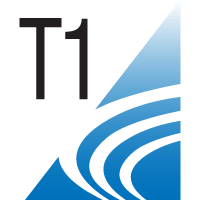Adult Diagnostic (AD)
LM202 - An Update on the All-in-One Six-Minute Repeat and Recall Test
Thursday, April 20, 2023
8:00 AM - 9:00 AM PDT
Location: Tahoma 4 ** 800 Pike
Earn 0.1 CEUs

Francis K. Kuk, PhD
Director
ORCA-USA, WSAudiology
lisle, IllinoisDisclosure(s): WSAudiology: Employment (Ongoing)
Lead Presenter(s)
Abstract:
The Quick-RRT (Repeat-Recall Test) is a 6-minute clinical tool that highlights the difference between audiologist-driven care and non-professional care. It measures the speech-in-noise ability, working memory, listening effort and willingness to stay in noise of the listeners. The tool may be administered unaided to establish baseline and aided to demonstrate efficacy of intervention. We will review its applications and update the audience on recent research findings on the test.
Summary:
The new legislation on over-the-counter (OTC) hearing aids brings new challenges and opportunities to our profession. We must demonstrate the added values that audiologist-driven service provides over OTC devices by integrating our current knowledge into the patient’s hearing-aid journey, including selection of hearing aids, fitting, verification and validation, counseling and follow-up.
In recent years, our profession has increasingly recognized the role that cognition plays in our communication success, especially in noise. In addition, we realize that cognitive effort and noise tolerance are also important criteria that patients use to judge communication success. While many options have been discussed, how to integrate these facets of knowledge into a practical clinical tool/protocol remains unclear.
A few years back, we integrated the concepts behind testing of speech-in-noise, working memory and listening effort with motivation and setting of realistic expectations into a test tool called the Repeat-Recall Test. The whole test protocol takes about 25 minutes to finish. The test was validated and norms from normal-hearing listeners were gathered so comparisons can be made. The background and preliminary applications of the test were reported at the 2019 AAA convention.
Since then, we created a 6-minute version of the test without sacrificing too much information. The listener’s performance on the outcome measures is compared to data from normal-hearing listeners with no cognitive impairment. The results of the Quick RRT allow (1) identification of the listener’s strengths and weaknesses, relative to normal-hearing peers, (2) identification of areas that need intervention, and (3) a platform for better counseling and setting of realistic expectations. We presented the Q-RRT at the 2022 AAA convention with rave reviews.
This year we have collected additional data to demonstrate the validity of the test. We have shown high correlation between the speech-in-noise scores measured in the Q-RRT with traditional speech-in-noise tests. We have shown that the recall scores on the Q-RRT correlate with measures of working memory such as the Reading Span and Digit Span tests. We have demonstrated that the listening effort ratings correlate with measures of alpha brain activities and estimates of willingness to stay in noise (opposite directions). These findings not only validate that the Q-RRT measures the constructs it is designed to measure, but also provide new ways for clinicians to use the Q-RRT to better understand their patients and provide distinguishable patient care.
In this presentation, we will report on the additional research we have conducted on this tool since the last presentation. We will integrate the information into a clinical protocol and provide case examples for easy implementation.
The Quick-RRT (Repeat-Recall Test) is a 6-minute clinical tool that highlights the difference between audiologist-driven care and non-professional care. It measures the speech-in-noise ability, working memory, listening effort and willingness to stay in noise of the listeners. The tool may be administered unaided to establish baseline and aided to demonstrate efficacy of intervention. We will review its applications and update the audience on recent research findings on the test.
Summary:
The new legislation on over-the-counter (OTC) hearing aids brings new challenges and opportunities to our profession. We must demonstrate the added values that audiologist-driven service provides over OTC devices by integrating our current knowledge into the patient’s hearing-aid journey, including selection of hearing aids, fitting, verification and validation, counseling and follow-up.
In recent years, our profession has increasingly recognized the role that cognition plays in our communication success, especially in noise. In addition, we realize that cognitive effort and noise tolerance are also important criteria that patients use to judge communication success. While many options have been discussed, how to integrate these facets of knowledge into a practical clinical tool/protocol remains unclear.
A few years back, we integrated the concepts behind testing of speech-in-noise, working memory and listening effort with motivation and setting of realistic expectations into a test tool called the Repeat-Recall Test. The whole test protocol takes about 25 minutes to finish. The test was validated and norms from normal-hearing listeners were gathered so comparisons can be made. The background and preliminary applications of the test were reported at the 2019 AAA convention.
Since then, we created a 6-minute version of the test without sacrificing too much information. The listener’s performance on the outcome measures is compared to data from normal-hearing listeners with no cognitive impairment. The results of the Quick RRT allow (1) identification of the listener’s strengths and weaknesses, relative to normal-hearing peers, (2) identification of areas that need intervention, and (3) a platform for better counseling and setting of realistic expectations. We presented the Q-RRT at the 2022 AAA convention with rave reviews.
This year we have collected additional data to demonstrate the validity of the test. We have shown high correlation between the speech-in-noise scores measured in the Q-RRT with traditional speech-in-noise tests. We have shown that the recall scores on the Q-RRT correlate with measures of working memory such as the Reading Span and Digit Span tests. We have demonstrated that the listening effort ratings correlate with measures of alpha brain activities and estimates of willingness to stay in noise (opposite directions). These findings not only validate that the Q-RRT measures the constructs it is designed to measure, but also provide new ways for clinicians to use the Q-RRT to better understand their patients and provide distinguishable patient care.
In this presentation, we will report on the additional research we have conducted on this tool since the last presentation. We will integrate the information into a clinical protocol and provide case examples for easy implementation.
Learning Objectives:
- List the information that is available from performing the Quick RRT.
- Discus three applications of the Quick RRT.
- Describe the correlations between measures on the Q-RRT and external equivalent measures.

